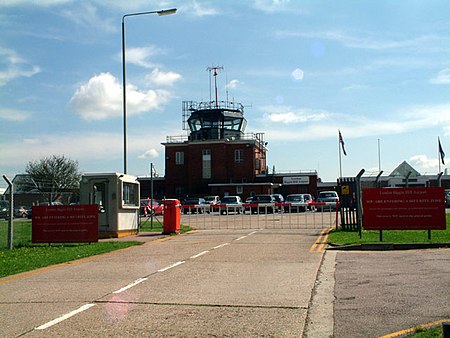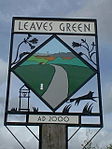London Biggin Hill Airport

London Biggin Hill Airport (IATA: BQH, ICAO: EGKB) is an operational general aviation airport at Biggin Hill in the London Borough of Bromley, located 12 NM (22 km; 14 mi) south-southeast of Central London. The airport was formerly a Royal Air Force station RAF Biggin Hill, and a small enclave on the airport still retains that designation. Biggin Hill is best known for its role during the Battle of Britain in the Second World War, when it served as one of the principal fighter bases protecting London and South East England from attack by German Luftwaffe bombers. Over the course of the war, fighters based at Biggin Hill claimed 1,400 enemy aircraft, at the cost of the lives of 453 Biggin Hill based aircrew.The airport has a CAA Ordinary Licence (Number P804) that allows flights for the public transport of passengers or for flying instruction as authorised by the licensee (Regional Airports Limited). It specialises in general aviation, handling a spectrum of traffic from private aviation to large business jets. It currently has no scheduled airline service, as flights using the airport are not permitted to carry fare-paying passengers.
Excerpt from the Wikipedia article London Biggin Hill Airport (License: CC BY-SA 3.0, Authors, Images).London Biggin Hill Airport
Moxley Close, London
Geographical coordinates (GPS) Address Phone number Website External links Nearby Places Show on map
Geographical coordinates (GPS)
| Latitude | Longitude |
|---|---|
| N 51.330833333333 ° | E 0.0325 ° |
Address
London Biggin Hill Airport
Moxley Close
TN16 3BH London (London Borough of Bromley)
England, United Kingdom
Open on Google Maps











